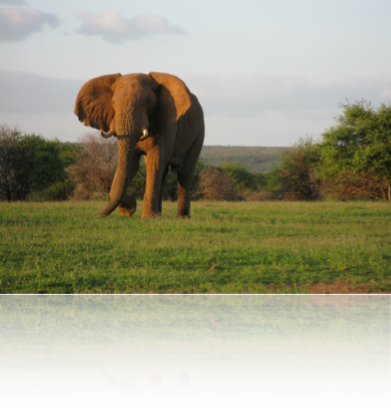Savanna Tree-Grass Interactions
The co-existence of trees and grasses in savannas has long been a topic of interest to ecologists. Understanding the dynamics of these two guilds is also important to savanna management -- as anthropogenic disturbances such as climate change, overgrazing, fire suppression, and fuelwood harvesting are affecting savanna trees and grasses around the world.
My research addresses both the causes and consequences of variation in savanna structure (tree density). For example, I ask how livestock, wildlife, and grass competition affect Acacia tree demography and competition-facilitation dynamics. Through a large-scale manipulation of tree density, I am also asking how herbivores and the grass community respond to changes in the abundance of trees. This experiment is the only one of its kind in an African savanna and is yielding a wealth of new insights into the importance of trees in savanna landscapes.
Wildlife-Livestock Co-Existence
Most of the Africa’s large mammals rely on unprotected land through at least part of their home range. As human populations increase, wildlife are increasingly having to share the land with livestock. Can these two guilds of large mammals co-exist? This question applies equally to many other wildlife-rich rangelands around the world.
With my research, I ask how we can minimize competition and maximize facilitation between livestock and wildlife. This includes understanding both the long-term effects of these different guilds on the vegetation and the short-term effects of grazing. I am co-PI on the Kenya Long-Term Exclusion Experiment (KLEE), a large-scale experiment that includes areas grazed by wildlife alone, cattle alone, and wildlife and cattle in combination. I am using this system to understand how herbivory and climate interact to cause abrupt changes in savanna vegetation.
Landscape Degradation and Restoration
In semi-arid rangelands around the world, overgrazing by livestock has led to degradation and a loss of ecosystem productivity. I am working to identify thresholds of degradation and how to reverse the degradative process. For example, I am asking how different sizes and qualities of remnant grass patches function and provide services like erosion control, forage production, and carbon sequestration. I am also testing simple approaches to restoring grass to areas that are now bare ground, with the long-term goal of understanding what size and spatial configuration of newly-created grass patches is necessary to create a self-reorganizing system.
Research


Research News
Tree density affects grass community
Six years after setting up my tree density experiment, I am starting to see significant shifts in grass species composition, where experimentally open sites are starting to resemble naturally open sites. Is it the trees themselves or the change in herbivory? Stay tuned.







